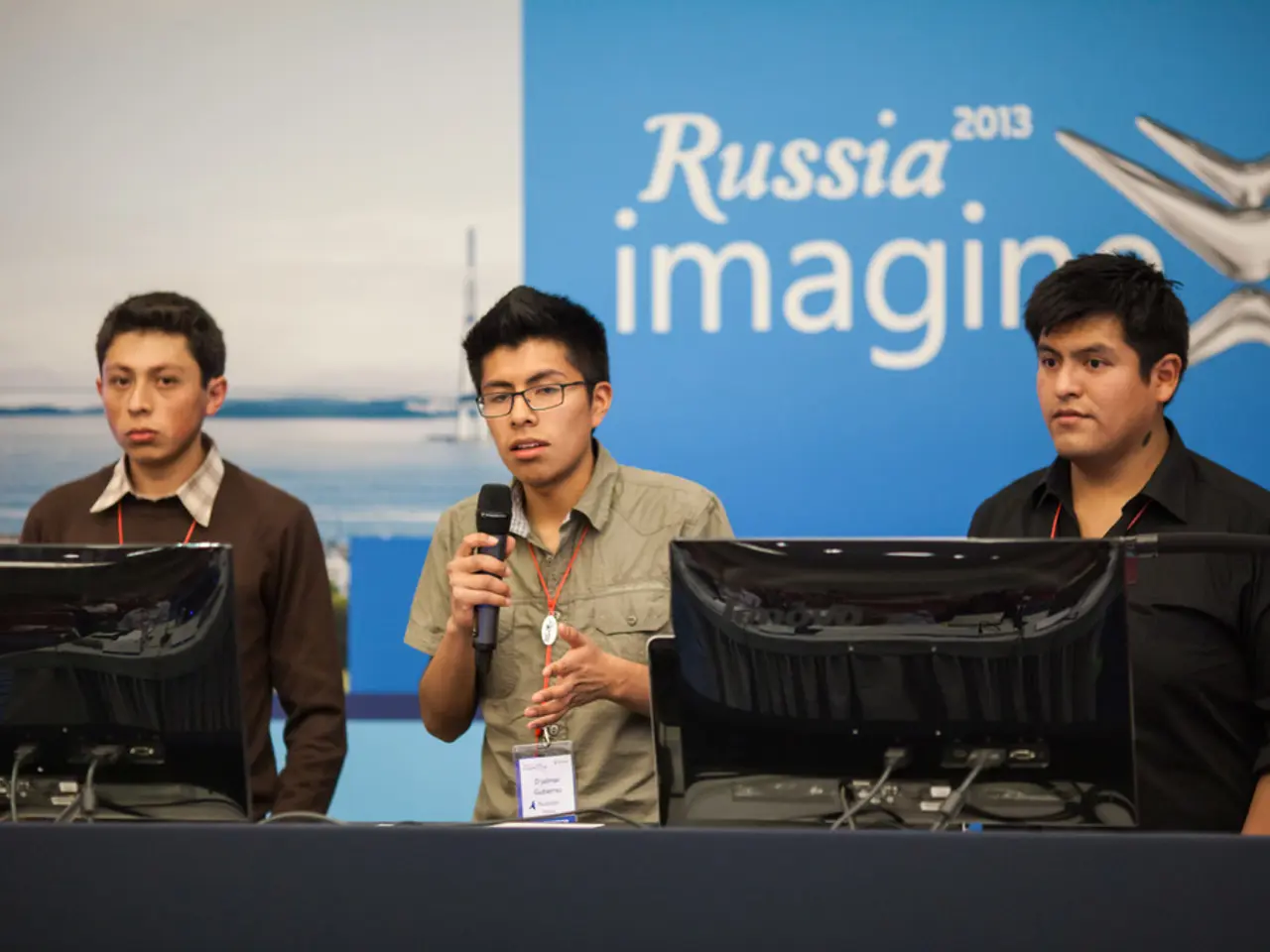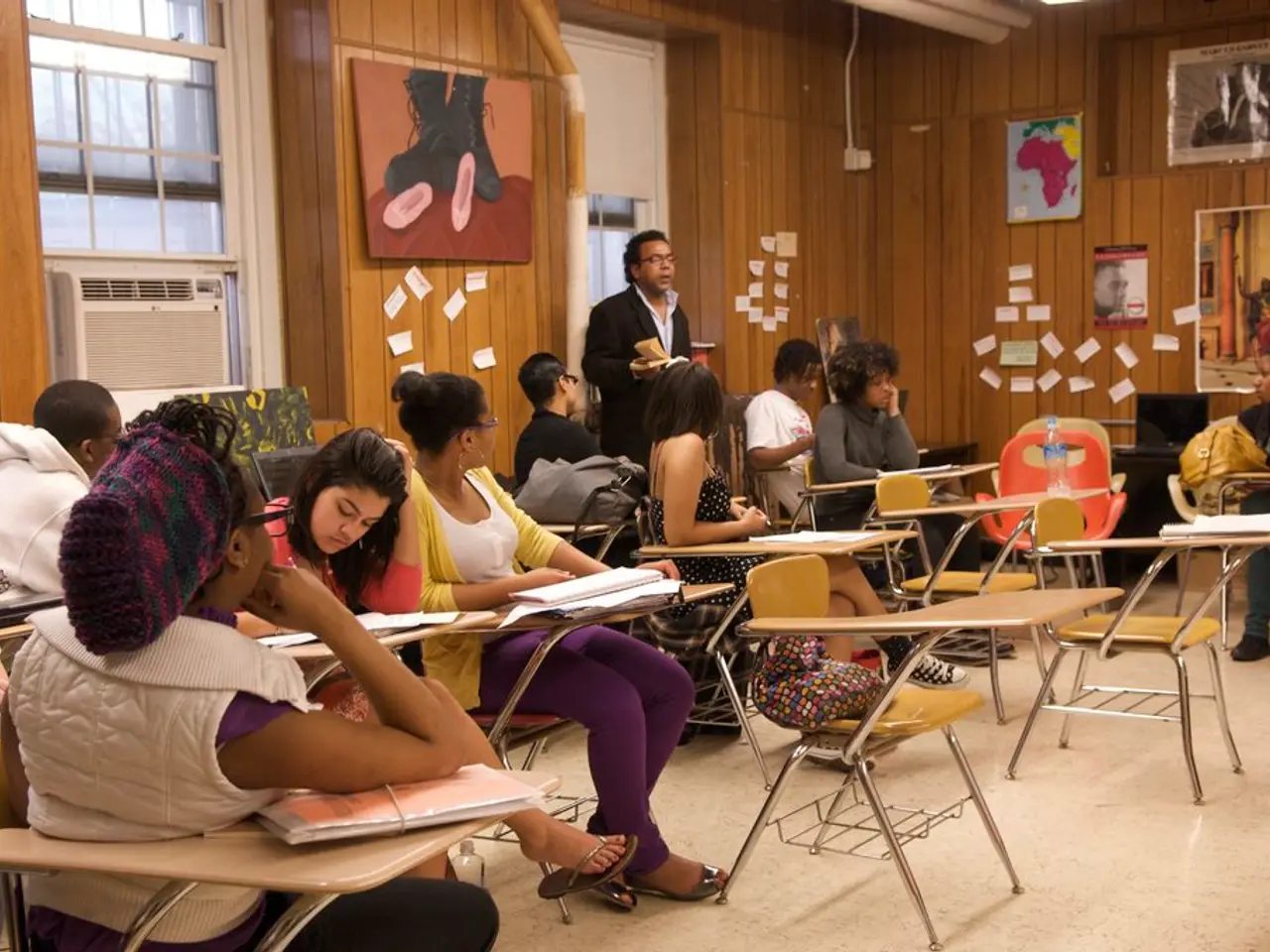Revamping SLH activities: Emphasizing scientific terminology
In a groundbreaking research project, six teachers from four schools in New Zealand have been focusing on a novel approach to help students build a shared vocabulary in science education. The key strategy involves the effective introduction and use of scientific vocabulary in the classroom, aligning with the New Zealand Curriculum.
The teachers employ a variety of techniques to support student understanding and retention, such as the Vocabulary Jumble, Walking Words Activity, Contextual and Meaningful Exposure, Chunking, and Activation of Prior Knowledge and Metacognition.
At the start of a new topic, teachers present a list of key scientific words, known as the Vocabulary Jumble. Students write down as many as they can, then try to recall and spell them from memory. They engage in group discussions to clarify meanings, using dictionaries if needed, and culminate in a whole-class review to consolidate understanding. This approach promotes repeated exposure, active engagement, and peer-supported learning of vocabulary.
The Walking Words Activity encourages social interaction and metacognitive skills. Students work in small groups to predict and write meanings for several scientific terms, then move these words to other groups, sharing and receiving new vocabulary and definitions. This reinforces word retention through multiple exposures in varied contexts.
Consistent with best practice in language acquisition, scientific vocabulary is introduced through comprehensible input slightly above students’ current level, often embedded in texts, stories, or practical activities that provide rich repetition and meaningful exposure before expecting production. Teachers break down complex scientific concepts into smaller, manageable chunks to avoid overwhelming students’ working memory.
Teachers also connect new scientific terms to students’ existing experiences and encourage “thinking about thinking” to help students process and retain new vocabulary effectively. For instance, discussing personal gardening experience before teaching about seed growth aids in the activation of prior knowledge.
Wall displays contribute to building connections and aiding in the interrogation of ideas. Year 3 and 4 students, for example, made a wall display on taste, showcasing and anchoring scientific vocabulary. Similarly, Year 5 and 6 students created a display related to the New Zealand longfin eel.
The Science in the New Zealand Curriculum (2007) emphasizes the importance of developing students' ability to communicate about science. Teachers should ensure the language they use is accessible and help students develop a 'scientific vocabulary'. This research project, over one term, investigates how teachers used and adapted Science Learning Hub resources for their science teaching.
Year 7 and 8 students labeled features of their earthworm diagram using correct terms, demonstrating their ability to use new vocabulary. Some of the resources used in the research project include "Investigating earthworms - introduction", "Longfin eels", and "Marine food webs".
In conclusion, these strategies support both English language learners and all students’ acquisition of scientific language by offering multiple, varied, and scaffolded opportunities for engagement, retrieval, and meaning-making within science education, as exemplified in New Zealand's educational resources and curriculum approaches.
- The teachers' approach to science education in New Zealand encourages learning by employing techniques like the Vocabulary Jumble and Walking Words Activity, which foster repeated exposure, active engagement, and peer-supported learning of scientific vocabulary.
- In alignment with the New Zealand Curriculum and best practices in language acquisition, these strategies aim to develop students' scientific vocabulary by introducing terms through comprehensible input, connecting them to personal experiences, and breaking down complex concepts into manageable chunks.




